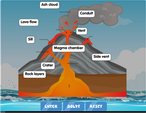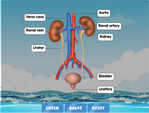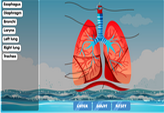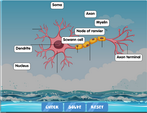The diagram of the skin labelling quiz
We don’t thank our skin enough for its roles in our bodies. It’s a tough and complex organ that protects our bodies from the environment and all sorts of harmful particles and microbes. Our skin even contains a protein called keratin to make it waterproof.
Discovering the Layers: A Journey into the Skin Diagram Labeling
Skin, the body's largest organ, serves as our protective shield against external elements and plays a vital role in various physiological processes. To truly understand the intricacies of this magnificent organ, it's essential to delve into skin diagram labeling. By exploring and labeling a skin diagram, young learners can appreciate the complexity and importance of the skin's many components.
The Importance of the Skin
Before we dive into the nitty-gritty of the skin labeling diagram, it's crucial to grasp the role of skin in our daily lives. Apart from being our protective barrier, the skin helps regulate body temperature, facilitates the sense of touch, and aids in the synthesis of Vitamin D.
Embarking on the Labeling Journey: Major Parts to Identify
Utilizing a skin diagram to label is a hands-on way to introduce young minds to the structure of the skin. The skin, at its core, comprises three primary layers:
Epidermis: The outermost layer, which provides the first line of defense against external elements.
Dermis: Located beneath the epidermis, it contains sweat glands, hair follicles, and other structures.
Subcutaneous Layer (Hypodermis): The innermost layer, primarily made up of fat and connective tissue.
To make the learning process interactive and fun, check out this engaging skin diagram labeling quiz that offers a unique platform to label the skin diagram effectively.
Further Insights into Skin Components
Once you're familiar with the primary layers, delving deeper will reveal more structures that deserve attention:
Hair Follicles: Tiny structures from which hairs emerge.
Sebaceous Glands: Produce oil (sebum) that moisturizes the skin and hair.
Sweat Glands: Help in regulating body temperature through sweat production.
Blood Vessels: Supply nutrients to the skin and aid in temperature regulation.
The Benefits of Using a Skin Labeling Diagram
Visual Learning: Many children are visual learners, and a label skin diagram caters to this learning style effectively.
Retention: Interactive labeling reinforces memory retention, ensuring that knowledge sticks.
Confidence Boost: Successfully labeling different parts of the skin can enhance a child's confidence in their scientific knowledge.
Dive Deeper with More Science Games
The journey doesn't end with the skin! For those eager to delve deeper into the fascinating world of science, a treasure trove of interactive educational experiences awaits. The Science Games section on ESL Games Plus offers a plethora of games tailored for budding scientists, ensuring that learning is always engaging and enlightening.
Conclusion
The skin, with its layers and intricate components, is a marvel of human biology. By immersing ourselves in skin diagram labeling, we not only gain insight into this vital organ but also foster a broader appreciation for the wonders of the human body. So, aspiring biologists, grab your labels and embark on this exciting exploration of the skin!
The skin is actually the body’s largest organ – stretching as long as six meters in surface area. The skin is made of two primary layers – the epidermis at the top, and the dermis deeper down – which contain several structures.
The epidermis is made of many thin layers – most of which are composed of dead cells. The deepest layer creates new cells that are continuously being pushed upward, dying and leaving behind their keratin as they become new epidermis.
The dermis is the thicker, deeper layer of the skin. You can find several structures here, such as the sweat glands, sensory nerves that detect touch, heat and pain, and blood vessels. The roots of our hairs are also located here.
A third layer – called the hypodermis – exists. It connects the skin to the muscles and bones beneath. Our body stores fat in the hypodermis to conserve energy and act as a soft cushion against damage.
The diagram of the skin labelling quiz presented here can be a valuable guide in gaining a better understanding of the skin’s different parts and how they are specialized to protect and heal the body from damage, and sense various stimuli like touch and heat.











